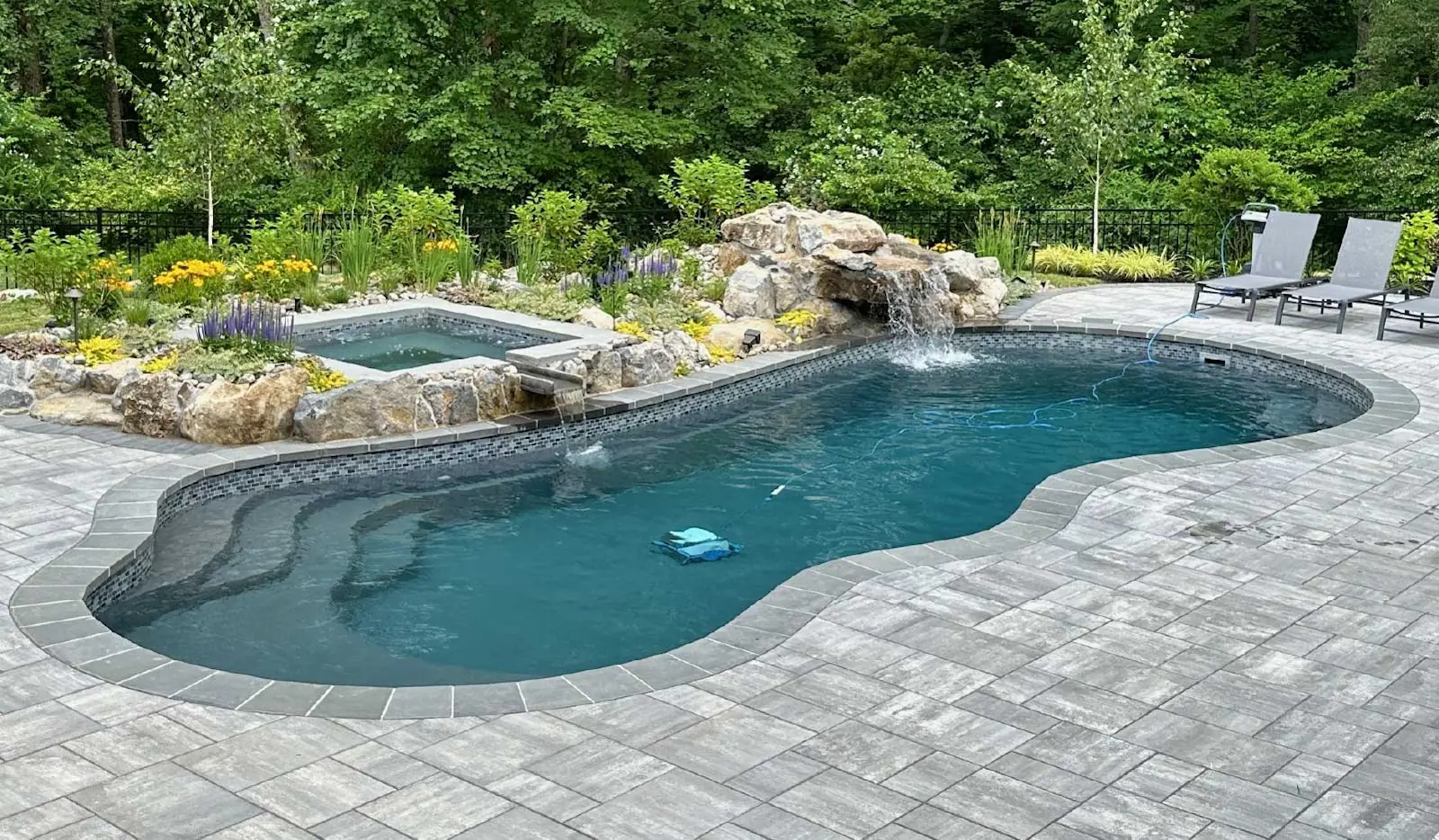Introduction
Many homeowners assume that pools come in only two categories: fully above ground or entirely inground. However, semi-inground pools offer a stylish middle ground, blending affordability with aesthetic appeal.
Choosing between an inground pool and a semi-inground pool is like deciding between a tailored suit and a chic, ready-to-wear ensemble—both are stylish, but they serve different needs.
In this guide, we’ll break down the key differences between these two pool types, helping you make the best decision for your home.
What is an Inground Pool?
This is a swimming pool that is fully installed below ground level, seamlessly integrating into your backyard landscape.
Construction Process
- Requires excavation to create space for the pool structure.
- Installed using durable materials such as concrete, fiberglass, or vinyl liner.
- Typically involves professional installation due to structural complexity.
Common Uses
- Ideal for large backyard spaces where a seamless look is desired.
- Frequently chosen for luxury designs with resort-style features like infinity edges and waterfalls.
What is a Semi-inground Pool?
A semi-inground pool is a hybrid between above-ground and inground, partially buried in the ground while maintaining a raised profile. Semi-inground pools are sometimes referred to as partial inground pools.
Construction Process
- Built with reinforced walls to support partial exposure.
- Can be installed on sloped terrain, making it a practical choice for uneven yards.
Common Uses
- Great for yards with elevation changes where a fully inground pool may not be feasible.
- A budget-friendly alternative to a full inground pool while still offering a stylish aesthetic.
Cost Comparison: Which is More Affordable?
Initial Investment
- Inground pools tend to be more expensive due to extensive excavation, materials, and labor.
- Semi-inground pools offer a more budget-friendly option with lower excavation costs.
Long-term Expenses
- Maintenance and durability costs vary based on materials and design.
- Customization options, such as lighting, decking, and heating, can significantly impact the final price.
Aesthetic Appeal: Which Pool Looks More Seamless?
Inground
- Blend naturally with landscaping.
- Allow for luxury design elements like infinity edges, waterfalls, and built-in seating.
Semi-inground
- Create a stylish raised-wall effect, adding visual interest.
- Can be enhanced with decking, stonework, or custom finishes for a high-end look.
Both options are customizable, but inground options offer a more seamless integration into the landscape.
Maintenance Considerations: Longevity & Upkeep
Cleaning & Filtration
- Both require regular maintenance, including filtration and chemical treatments.
- Inground pools may accumulate more debris due to full ground exposure.
Durability
- Concrete inground pools last the longest but require occasional resurfacing.
- Semi-inground pools are durable but may be more affected by weather conditions due to partial exposure.
Installation Time: How Long Does Each Take?
Inground
- Typically take several weeks to a few months due to excavation and construction.
Semi-inground
- Faster installation—often completed within a few weeks.
- Less complex excavation means reduced labor and material costs.
Flexibility in Design: Shapes, Sizes & Layouts
Inground
- Highly customizable in shape, depth, and material.
- Options include small inground pools for compact spaces.
Semi-inground
- Depth customization is more limited, but various shapes and sizes are available.
- Ideal for sloped yards where a full inground pool isn’t practical.
Temperature Regulation: Which Pool Stays Warmer?
Inground
- Retain heat better due to full ground insulation.
Semi-inground
- More exposed to air, leading to faster heat loss.
- Can benefit from solar covers or heating systems to maintain warmth.
Structural Considerations: Stability & Durability Over Time
Inground
- Built to withstand ground pressure and environmental changes.
Semi-inground
- Require reinforced walls to prevent shifting or cracking over time.
Family Suitability: Which Option is Safer for Kids & Pets?
Safety Features for Inground Pools
- Can be enclosed with fencing, safety covers, or alarms.
- Offer gradual entry options, such as beach-style entry for young children.
Safety Features for Semi-inground Pools
- Raised walls act as a natural barrier, making it harder for pets and small children to access.
- Easier to install safety gates or railings around the perimeter.
Choosing the Right Pool: Factors to Consider
When deciding between an inground or semi-inground pool, keep these key factors in mind:
- Yard Space & Terrain:
- Do you have a flat yard or a sloped landscape that requires adaptability?
- Budget & Long-Term Costs:
- Consider both the initial investment and ongoing maintenance expenses.
- Aesthetic Preferences:
- Do you prefer a seamless, integrated look or a partially raised design that adds visual depth?
- Family Needs & Safety:
- Which option best suits your household’s safety and accessibility requirements?
Conclusion
Whether you’re drawn to the luxury and seamless aesthetics of an inground option or the affordable, stylish appeal of a semi-inground pool, both offer unique advantages.
Ready to design your dream pool? Explore our range of stylish pool designs or contact us for expert guidance. Let’s turn your backyard into the ultimate oasis!
